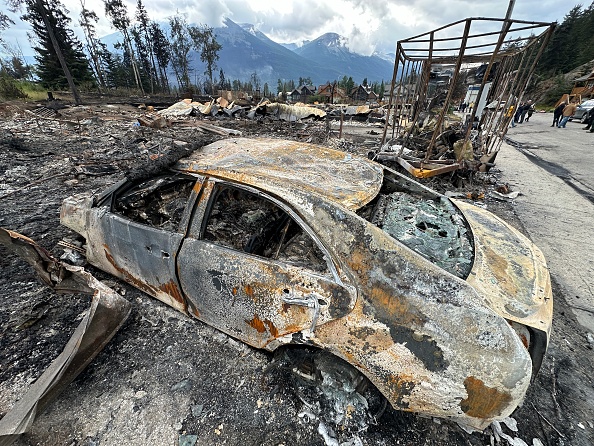Carbon dioxide emissions from forest fires have surged 60% globally since 2001, as more and bigger blazes tore through fast-warming regions outside the tropics, according to a new study. The research, published Thursday in the journal Science, shows that wildfires are getting worse, particularly in one climate-sensitive area — the northern boreal forests, which span from Russia to North America. Fire emissions have almost tripled from those forests during the past 20 years, the authors of the report said.
The study attributed rising emissions from burning forests to a combination of more fire-favorable weather and faster-growing woodlands that provide flammable organic matter. Both trends are aided by rapid temperature rises in the high northern latitudes, which are warming twice as fast as the global average because of climate change.
“The steep trend towards greater extratropical forest fire emissions is a warning of the growing vulnerability of forests,” said Matthew Jones, the study’s lead author and a researcher at the University of East Anglia in the U.K. “It poses a significant challenge for global targets to tackle climate change.”
That’s because forests are vital to regulate Earth’s climate, absorbing about one quarter of the carbon released from human activities such as burning fossil fuels.
Related Articles
Distressed about climate change, a ‘supermajority’ of young Americans across the political spectrum want bolder action
Recent recalls raise concerns about food safety, but experts credit better regulation and technology
Millions lose power every year because of extreme weather. Here’s how we could prevent it
Los Gatos council set to repeal all-electric requirement for new buildings
Final environmental impact report for Oakland airport expansion released
Countries around the world also count on reforestation and afforestation to help remove more CO2 from the atmosphere — a plan that would work only if trees remain standing.
The worsening forest fire crisis comes at a time when the burning of savannas and grasslands has shrunk significantly, resulting in a roughly 25% decline in the total burnt areas by wildfires since 2001.
Yet global fire emissions have not gone down, Jones and his coauthors say, because the uptake in forest fires has canceled out all the climate gains from reduced savanna and grassland fires.
Making matters worse, the researchers also found a sharp rise in forest fire severity — a measure of how much carbon is emitted per unit of area burned. This is up by nearly 50% globally.
“This signals that fires are causing much more damage to forest ecosystems than they did in the past,” Jones said. “This will challenge the ability of forests to rebound— and recapture lost carbon — after fires.”
And more forest fires are not just a problem for the climate. They are also putting more communities and infrastructure at risk, and pushing firefighting services to the brink. One acute case occurred this summer in Canada when a catastrophic forest fire battered the Rocky Mountain resort town of Jasper, burning down part of the Alberta community and forcing tens of thousands of people to flee for their lives.
©2024 Bloomberg L.P. Visit bloomberg.com. Distributed by Tribune Content Agency, LLC.


